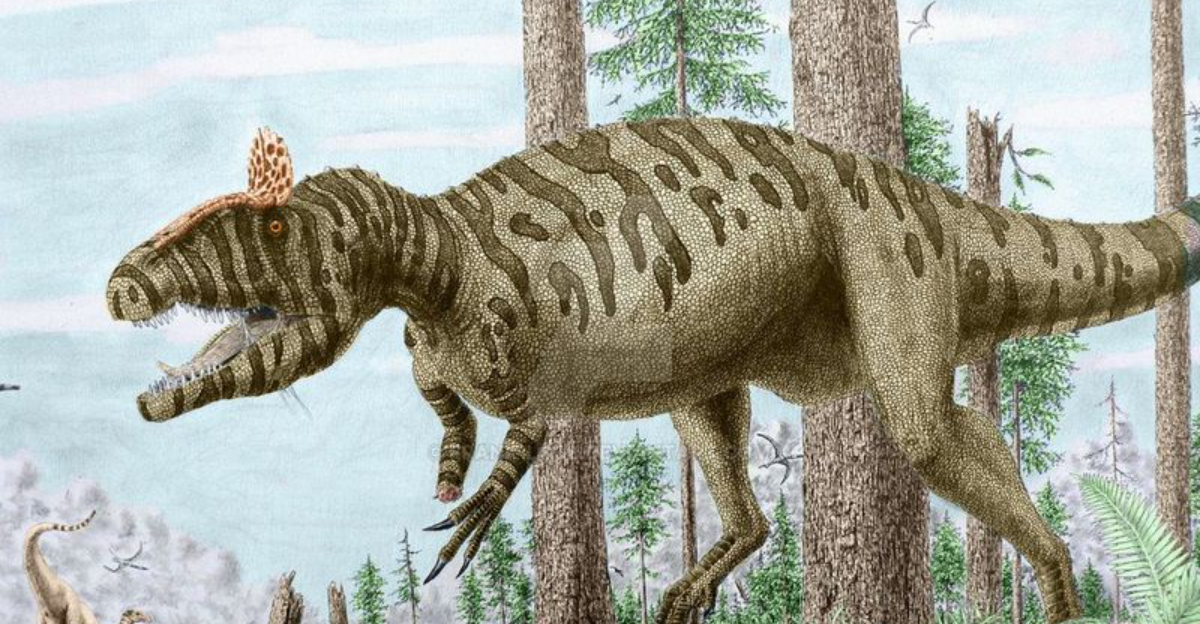The Cryolophosaurus, often dubbed the “King of the Jurassic,” stands as a magnificent testament to the diverse and complex world of prehistoric life.
This dinosaur, with its distinctive head crest and potential for feathers, captures the imagination of both scientists and enthusiasts alike.
Unearthed in the icy expanses of Antarctica, Cryolophosaurus challenges our perceptions of dinosaur habitats and adaptations.
Today, we’ll explore some intriguing facts about this fascinating creature, each shedding light on its unique characteristics and the environment it thrived in millions of years ago.
1. Crested Headpiece
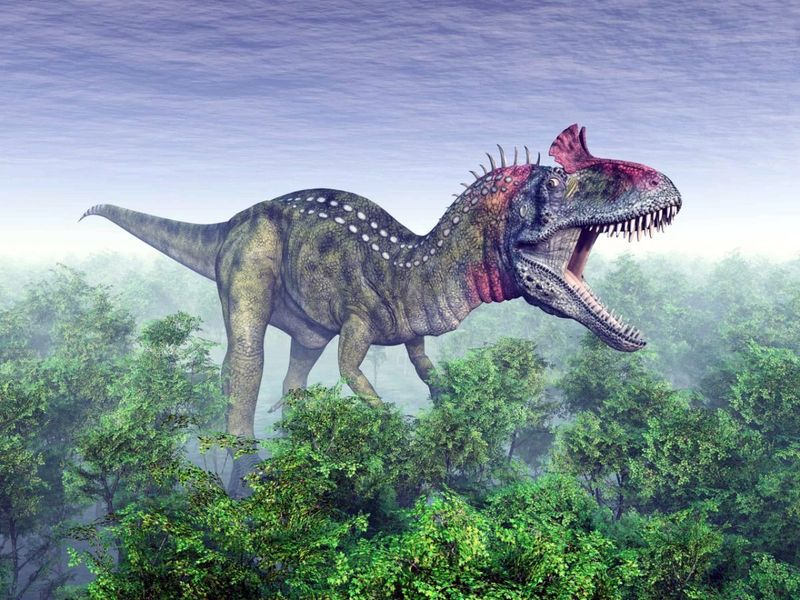
Cryolophosaurus boasted a unique, fan-shaped crest atop its head, setting it apart from other dinosaurs of its time. This distinctive feature, resembling a comb or wave, likely played a role in social interactions or courtship displays.
The crest’s purpose remains a topic of debate among paleontologists, with theories ranging from species recognition to a thermoregulatory function. Nonetheless, its striking appearance has earned Cryolophosaurus the nickname “Elvisaurus,” after the iconic hairstyle of Elvis Presley.
Interestingly, the crest was composed of bone, suggesting it was a robust feature rather than a fragile ornament. In the harsh, icy environment of Jurassic Antarctica, such a crest could have helped Cryolophosaurus stand out amongst its peers.
While some speculate its vivid colors, akin to modern birds, evidence for this remains speculative. However, the mere presence of this crest indicates that Cryolophosaurus was a creature of visual splendor.
Additionally, this feature might have contributed to its dominance in the prehistoric ecosystem. While definitive conclusions about its function are elusive, the crest undoubtedly added to the dinosaur’s allure and mystery, cementing its place in paleontological lore.
2. Feathered Appearance
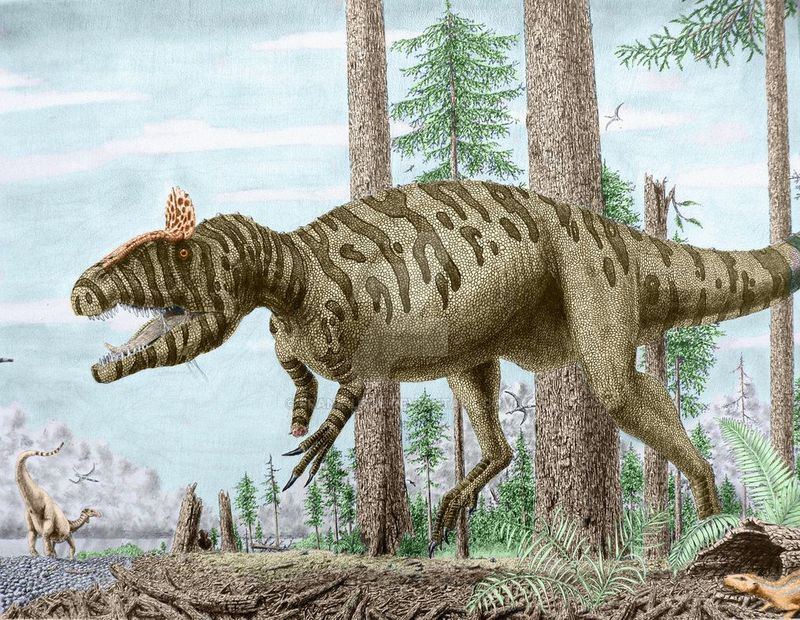
The notion that Cryolophosaurus sported feathers is both captivating and contentious. Evidence suggests the possibility of proto-feathers, which would align with its classification as a theropod.
This feathered trait could have provided insulation against the cold climates of its Antarctic habitat. While no direct fossil evidence of feathers has been found with Cryolophosaurus, comparisons to closely related species hint at this possibility.
Feathers in dinosaurs often served purposes beyond warmth, such as display and camouflage. In the case of Cryolophosaurus, feathers might have also played a role in mating rituals or social hierarchy. Imagine a vibrant display of color and motion as these creatures strutted across the icy plains.
The concept of a feathered carnivore in such an environment adds a layer of intrigue to its predatory prowess. Although further discoveries are needed to confirm this theory, the potential feathery covering of Cryolophosaurus continues to fuel scientific curiosity and debate.
The interplay between its predatory nature and the need for survival in a frigid climate makes the feather hypothesis an exciting area of ongoing research.
3. Antarctic Discovery
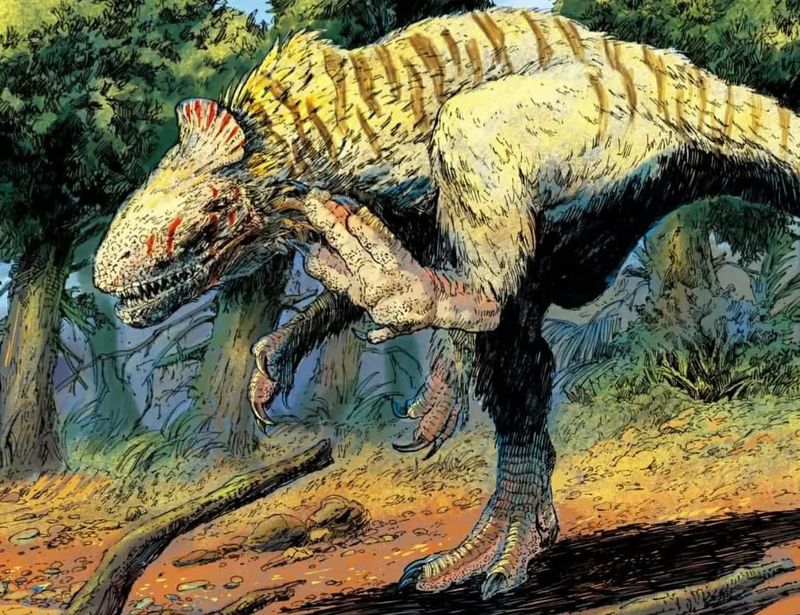
Cryolophosaurus holds the distinction of being the first theropod dinosaur discovered on the frozen continent of Antarctica. Its discovery in 1991 by paleontologist William Hammer opened new avenues for understanding dinosaur distribution and adaptation.
The harsh conditions of Antarctica today contrast sharply with the warmer, forested climate of the Jurassic period. This find challenges preconceived notions of dinosaur habitats, suggesting a more widespread and adaptable existence.
The fossil’s location, in the Transantarctic Mountains, provides vital clues about continental drift and prehistoric ecosystems.
Additionally, it emphasizes the incredible resilience of life, showcasing how dinosaurs like Cryolophosaurus thrived in what would become one of the world’s harshest environments.
The excavation itself was no small feat, requiring perseverance and ingenuity to extract the remains from thick ice and rock layers. This Antarctic connection adds a unique dimension to Cryolophosaurus’s legacy, highlighting nature’s ability to surprise and inspire.
Understanding its habitat helps paleontologists piece together the vast jigsaw of Earth’s ancient past, revealing a world where dinosaurs roamed continents now covered in ice.
4. Dietary Habits
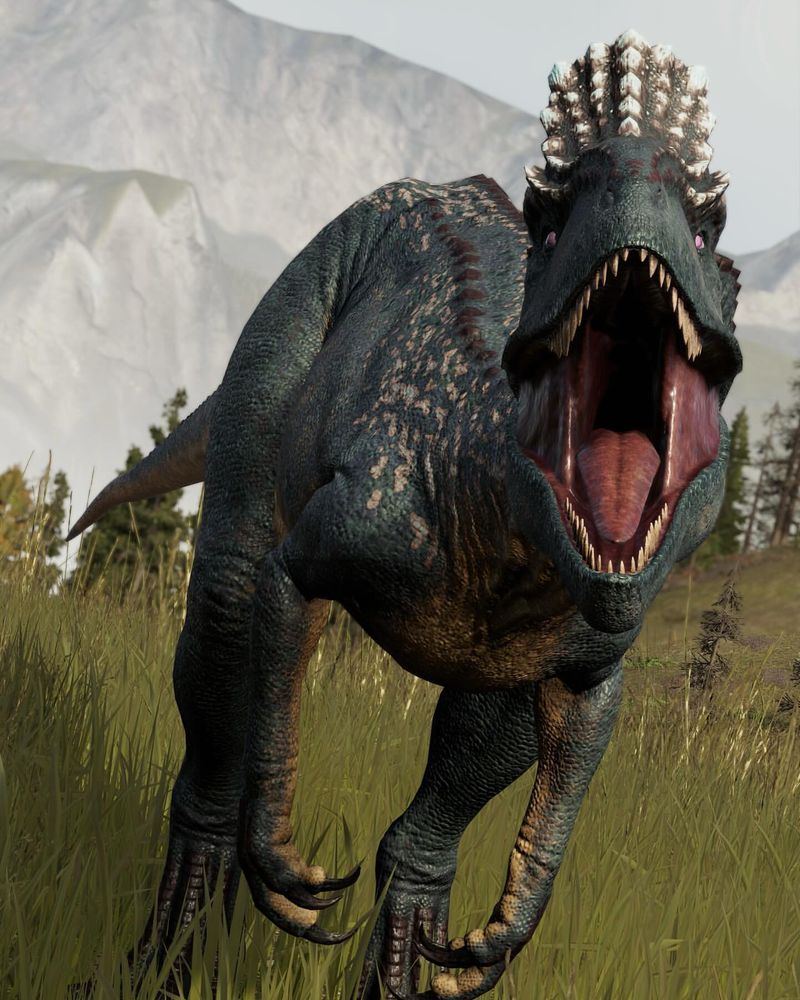
As a carnivorous theropod, Cryolophosaurus excelled as a top predator in its environment. Its diet likely consisted of smaller dinosaurs, reptiles, and early mammals that inhabited Jurassic Antarctica.
This varied menu points to a highly adaptable and opportunistic hunter, capable of preying on a range of species. The structure of its teeth and jaws suggests it was well-equipped for capturing and consuming meat, with serrated teeth designed for slicing through flesh.
Hunting strategies might have involved ambush tactics, utilizing the dense forest cover to stealthily approach prey. Alternatively, Cryolophosaurus could have operated in packs, coordinating attacks to bring down larger game.
The presence of diverse prey species in its ecosystem indicates a balanced and thriving food web. Additionally, the Cryolophosaurus’s role as a predator offers insights into the ecological dynamics of its time, reflecting the interconnectedness of species within their habitats.
Understanding its dietary preferences not only enriches our knowledge of Cryolophosaurus but also paints a vivid picture of the prehistoric world it dominated. These feeding habits reveal the intricate balance of nature, where predators shaped the evolutionary paths of their prey.
5. Size And Build
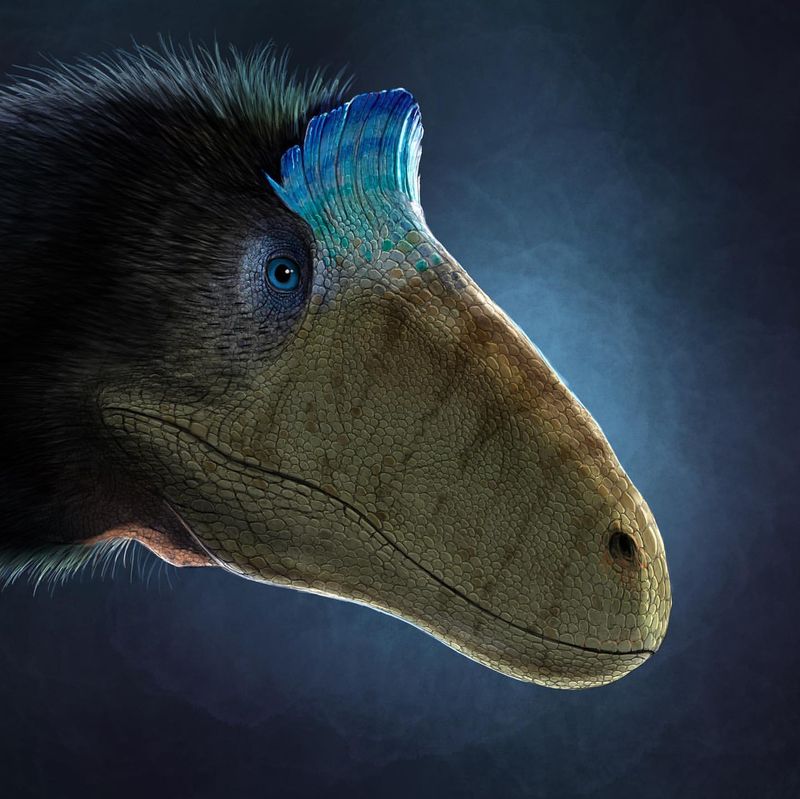
Cryolophosaurus was a formidable presence in the Jurassic landscape, boasting an impressive size that commanded attention. Measuring around 6 to 8 meters in length and weighing up to 465 kilograms, it was one of the larger theropods of its time.
This robust build enabled it to dominate its environment, preying on a variety of species. Its long tail provided balance, while powerful hind limbs facilitated swift and agile movement. This combination of size and speed made Cryolophosaurus a formidable hunter, capable of taking down prey with precision.
Its skeletal structure, particularly the robust femur, suggests a creature built for both strength and endurance. This physical prowess would have been essential for survival in the competitive Jurassic ecosystem.
In addition to its predatory capabilities, the size of Cryolophosaurus might have played a role in deterring potential rivals or predators. This impressive stature, along with its unique crested head, made it a standout figure in its habitat.
6. Social Behavior
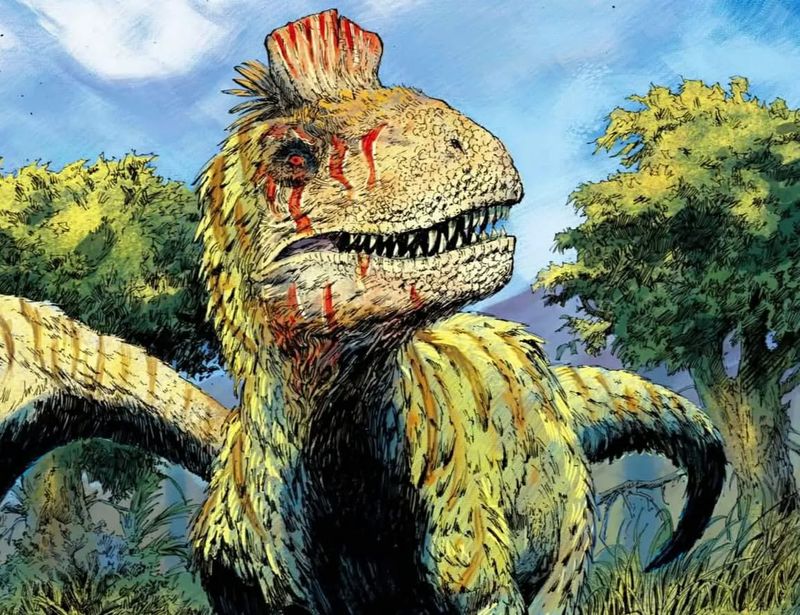
The social dynamics of Cryolophosaurus offer a fascinating glimpse into its behavior and interactions. While much remains speculative, it’s possible that these dinosaurs exhibited complex social structures.
The distinctive crest might have played a key role in communication, serving as a visual signal among members of the species. This could have included displays for mating, establishing dominance, or coordinating group movements.
Additionally, the potential for pack hunting suggests a level of cooperation and social organization. Such behavior would require communication skills and a degree of intelligence, indicating a more intricate social life than previously assumed.
The idea of Cryolophosaurus moving in groups also raises questions about their territorial nature and how they interacted with other species. These social behaviors might have been vital for survival, enhancing their ability to hunt and defend against larger predators.
Although direct evidence of social interactions is limited, the possibilities paint a picture of a dynamic and interactive social world. The exploration of these behaviors offers a window into the daily lives of Cryolophosaurus, revealing the rich tapestry of life that flourished during the Jurassic period.
7. Paleontological Significance
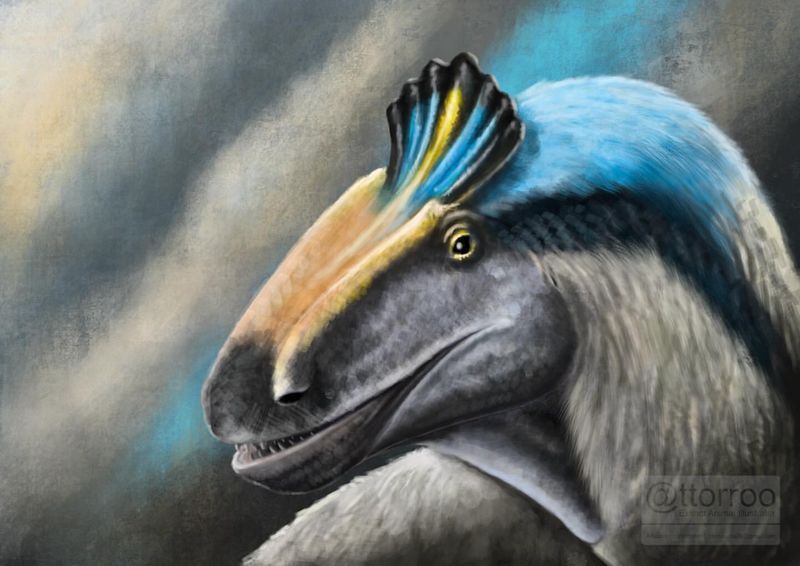
The discovery of Cryolophosaurus has greatly enriched the field of paleontology, offering fresh perspectives on dinosaur evolution and behavior. As one of the few known dinosaurs from Antarctica, it provides crucial data on the distribution of species during the Jurassic era.
This discovery challenges traditional views, suggesting that dinosaurs occupied a broader range of climates and terrains than previously thought. The well-preserved fossils of Cryolophosaurus serve as a valuable resource for studying the anatomy and physiology of theropods.
Detailed examinations of its skeletal structure have revealed insights into growth patterns, locomotion, and feeding mechanisms. Furthermore, the unique crest has sparked discussions about the evolution of display features in dinosaurs.
The Antarctic location of the find introduces new considerations regarding continental shifts and climatic changes over millions of years. This discovery underscores the dynamic nature of Earth’s history, where landmasses and ecosystems have continuously transformed.
Cryolophosaurus’s contribution to paleontology extends beyond its physical remains, stimulating ongoing research and debate. Its significance lies in its ability to broaden our understanding of prehistoric life and inspire future explorations into the mysteries of our planet’s ancient past.

